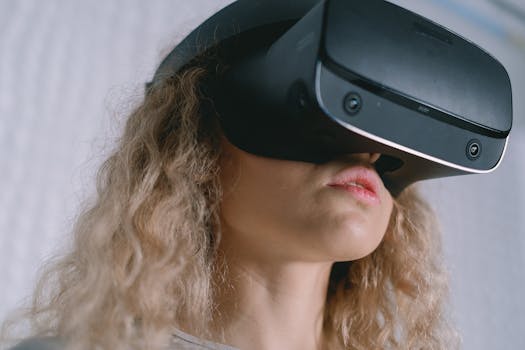Exploring the Latest Innovations in Digital Cameras: What You Need to Know
Takeaways:
- Understand the key features of the latest digital cameras.
- Learn about the advancements in technology that are shaping the industry.
- Discover which cameras are best suited for different types of photography.
The digital camera market is evolving rapidly, with new models and technologies emerging regularly. Whether you are a professional photographer or an enthusiast, keeping up with the latest advancements can enhance your photography skills and outcomes. In this article, we will explore the latest digital cameras available, highlighting their features, benefits, and what sets them apart in an increasingly competitive market.
1. The Rise of Mirrorless Cameras
In recent years, mirrorless cameras have surged in popularity, challenging the dominance of traditional DSLR models. These cameras offer several advantages that appeal to both professionals and hobbyists alike.
1.1 Advantages of Mirrorless Cameras
Mirrorless cameras are known for their compact design, lightweight construction, and the absence of a mirror mechanism, which allows for faster shooting speeds. Additionally, they often provide excellent autofocus capabilities and real-time exposure previews.
1.2 Top Mirrorless Cameras on the Market
Some of the leading mirrorless cameras include the Sony A7 IV, Canon EOS R5, and Nikon Z6 II. Each of these models offers unique features tailored to different photography styles, from landscape to portrait photography.
1.3 The Future of Mirrorless Technology
As technology advances, mirrorless cameras are expected to integrate even more innovative features, such as improved image stabilization, enhanced low-light performance, and advanced connectivity options for seamless sharing and editing.
2. DSLRs: Still a Strong Contender
Despite the rise of mirrorless cameras, DSLRs remain a popular choice among photographers. They provide a range of benefits that continue to attract users.
2.1 Benefits of DSLR Cameras
DSLRs are known for their robust build, extensive battery life, and optical viewfinders, which many photographers prefer for their clarity and responsiveness. Furthermore, DSLRs often have a larger selection of lenses available.
2.2 Popular DSLR Models
Some of the most sought-after DSLR cameras include the Canon EOS 90D, Nikon D850, and Pentax K-1 Mark II. Each model offers a unique set of features and capabilities that cater to various photography needs.
2.3 The Evolution of DSLR Technology
As technology progresses, DSLRs are incorporating features such as Wi-Fi connectivity, touch screens, and 4K video recording, ensuring they remain relevant in the digital age.
3. The Impact of Smartphone Cameras
Smartphone cameras have vastly improved over the years, leading to a significant impact on the digital camera market. Many users are now opting for smartphones over traditional cameras for their convenience and portability.
3.1 Advancements in Smartphone Camera Technology
Recent advancements include multi-lens setups, improved image processing capabilities, and advanced computational photography techniques that enhance image quality.
3.2 Comparing Smartphone Cameras to Traditional Cameras
While smartphone cameras are incredibly capable, traditional cameras still hold the edge in terms of sensor size, lens options, and manual control, making them preferable for professional photography.
3.3 The Future of Smartphone Photography
As smartphone manufacturers continue to innovate, we can expect to see even more sophisticated camera features, such as AI-driven enhancements and better low-light performance, blurring the lines between smartphones and dedicated cameras.
4. Key Features to Look for in a New Camera
When choosing a new digital camera, it’s crucial to consider several key features that will impact your photography experience.
4.1 Sensor Size and Quality
The size of the camera’s sensor plays a significant role in image quality. Larger sensors typically produce better images, especially in low-light conditions. Understanding the differences between full-frame, APS-C, and micro four-thirds sensors can help you make an informed decision.
4.2 Autofocus Systems
Modern cameras come equipped with advanced autofocus systems that can track moving subjects and focus quickly. Look for cameras with features like phase detection and eye autofocus for improved performance.
4.3 Video Capabilities
With the rise of video content creation, many photographers are looking for cameras that excel in video recording. Consider features such as 4K recording, frame rates, and in-body stabilization when selecting your camera.
5. Innovations in Camera Technology
The digital camera industry is continually evolving, with new technologies enhancing the shooting experience.
5.1 Image Stabilization Technologies
Modern cameras often feature advanced image stabilization systems, which can significantly reduce blur caused by camera shake. These technologies are especially beneficial for handheld shooting and low-light photography.
5.2 Connectivity and Smart Features
Wi-Fi, Bluetooth, and NFC capabilities allow photographers to connect their cameras to smartphones and other devices for easy sharing and remote control. Look for cameras that offer these features for added convenience.
5.3 Artificial Intelligence in Photography
AI technology is making its way into cameras, with features that can automatically adjust settings, recognize scenes, and enhance images. This technology is particularly useful for beginners looking for a more accessible photography experience.
6. Choosing the Right Camera for Your Needs
With so many options available, selecting the right camera can be overwhelming. Here are some tips to guide your decision-making process.
6.1 Assess Your Photography Style
Different styles of photography require different types of cameras. Consider whether you will be shooting landscapes, portraits, sports, or wildlife, as each genre has specific requirements.
6.2 Budget Considerations
Digital cameras come in a wide range of prices. Determine your budget and explore options within your price range, keeping in mind that additional costs for lenses and accessories can add up.
6.3 Test Before You Buy
If possible, try out cameras in-store to gauge their feel and usability. Handling the camera can help you determine whether it fits your needs and preferences.
7. Maintenance and Care for Your Digital Camera
Proper care and maintenance of your digital camera can extend its lifespan and ensure optimal performance.
7.1 Cleaning Your Camera
Regular cleaning of your camera, including the lens and sensor, is essential to maintain image quality. Use appropriate cleaning kits and techniques to avoid damaging your equipment.
7.2 Storing Your Camera
When not in use, store your camera in a cool, dry place, preferably in a padded camera bag to protect it from dust and impacts.
7.3 Regular Firmware Updates
Keep your camera’s firmware updated to benefit from new features, enhancements, and bug fixes that manufacturers release periodically.
8. The Best Resources for Digital Photography
Whether you’re just starting out or looking to refine your skills, there are numerous resources available to help you on your photography journey.
8.1 Online Photography Courses
Websites like Udemy, Coursera, and MasterClass offer a variety of photography courses that cover everything from basics to advanced techniques.
8.2 Photography Blogs and Communities
Engaging with photography communities and reading blogs can provide valuable insights, tips, and inspiration. Platforms like Flickr, 500px, and various photography forums are excellent places to connect with fellow photographers.
8.3 Books on Photography Techniques
Books by renowned photographers and educators can provide in-depth knowledge on techniques and concepts. Classics like ‘Understanding Exposure’ by Bryan Peterson are highly recommended.
9. The Environmental Impact of Digital Cameras
As technology advances, it is crucial to consider the environmental impact of digital cameras.
9.1 Sustainable Manufacturing Practices
Many manufacturers are now adopting sustainable practices in the production of digital cameras, including reducing waste and using recyclable materials.
9.2 The Lifecycle of Digital Cameras
Understanding the lifecycle of a camera—from production to disposal—can help consumers make more informed choices about their purchases.
9.3 Recycling and Responsible Disposal
When it’s time to upgrade, consider recycling your old camera to prevent electronic waste. Many manufacturers and retailers offer recycling programs.
10. Final Thoughts on the Future of Digital Cameras
The future of digital cameras looks promising, with continuous advancements in technology and design. As photographers, it’s essential to stay informed about these developments to make the most out of your photography journey.
10.1 Anticipating Future Innovations
With the rapid pace of innovation, photographers can expect exciting new features that will enhance their shooting experience and creative possibilities.
10.2 The Role of User Feedback
Manufacturers are increasingly taking user feedback into account, leading to more user-friendly designs and features that cater to the needs of photographers.
10.3 Embracing the Change
As technology evolves, embracing change and adapting to new tools will empower photographers to push their creative boundaries and explore new horizons.
Sources:






